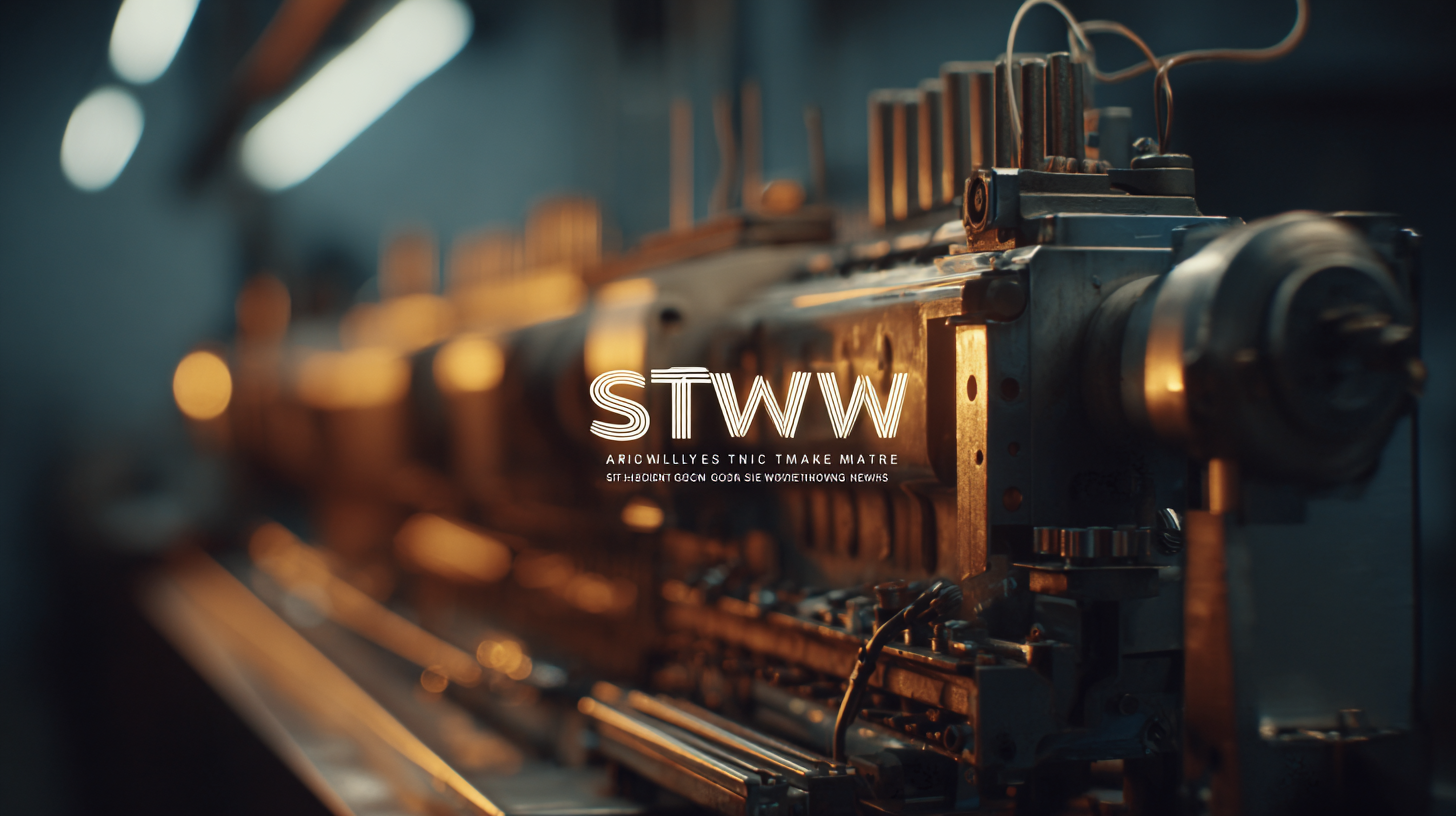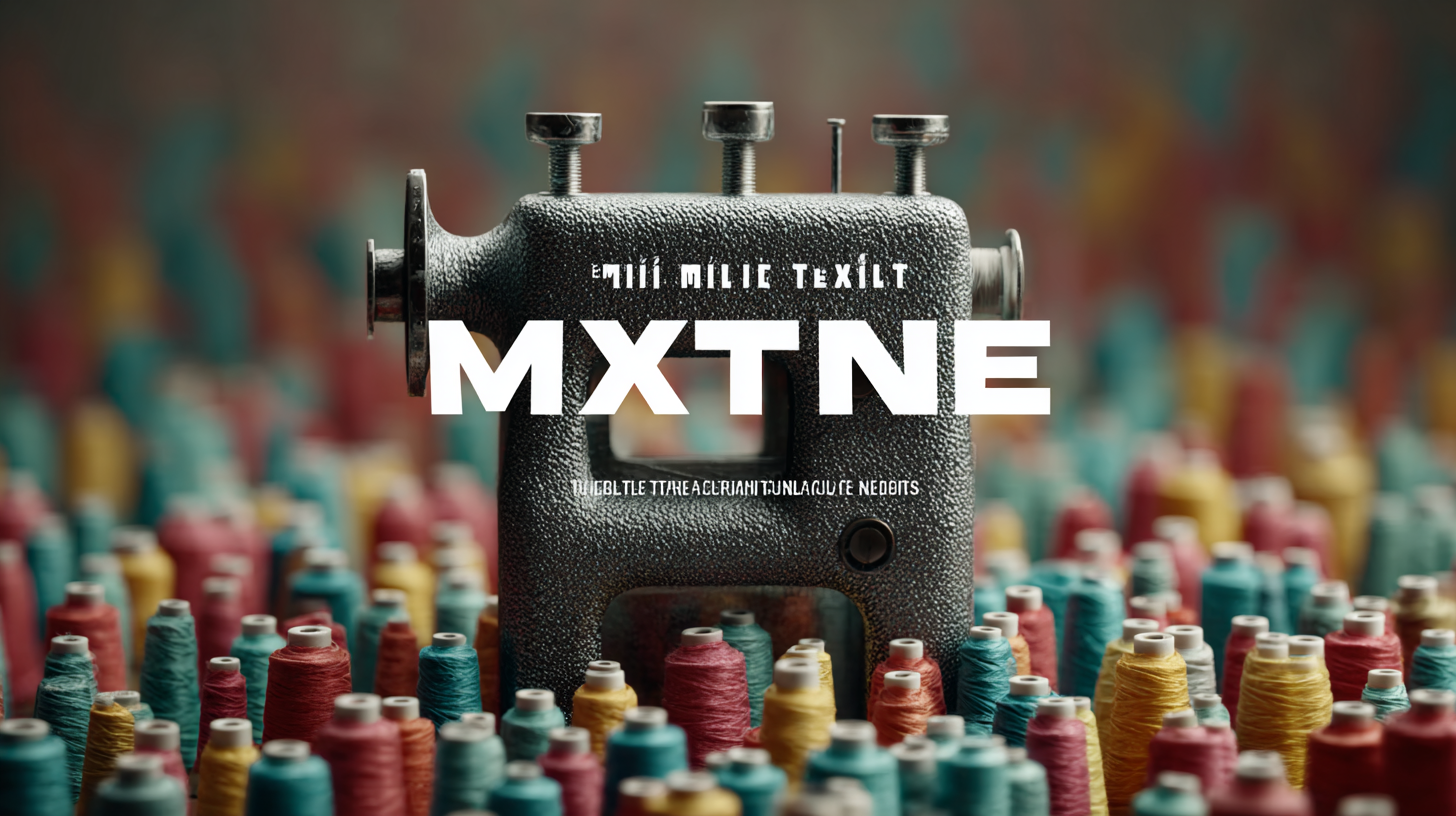Leave Your Message
In recent years, the textile industry has witnessed a remarkable shift towards sustainable and localized production methods, driven by the growing demand for eco-friendly practices and the need for agility in global sourcing. According to a report by the McKinsey & Company, nearly 60% of consumers are willing to pay more for sustainable materials, highlighting a clear market trend towards environmentally conscious choices. In response to this demand, innovative solutions such as the Mini Textile Machine have emerged, offering small-scale manufacturers the ability to produce high-quality textiles efficiently and with less environmental impact. These compact machines not only reduce the carbon footprint associated with transportation but also enable businesses to be more responsive to changing market needs. As we explore the potential of alternative small-scale textile machines, it becomes evident that they play a pivotal role in reinventing sourcing strategies and supporting a sustainable future for the textile industry.

The emergence of small-scale textile machines has the potential to significantly reshape global supply chains. As discussed at the inaugural APTEXPO in Singapore, which focuses on building flexible, resilient, and sustainable textile and apparel supply chains, these machines can enhance local production capabilities. According to a recent report from the Textile Industry Association, small-scale machines can reduce production costs by up to 30% while also decreasing lead times, making it easier for manufacturers to respond swiftly to changing market demands.
Furthermore, the integration of small-scale machines can contribute to sustainability in the textile sector. A study by EcoTextile News highlighted that localizing production through these machines can cut carbon emissions associated with transportation by as much as 50%. This not only advances a brand’s sustainability goals but also meets the growing consumer demand for environmentally responsible practices in the fashion industry. As companies look toward global sourcing, the adaptability of small-scale textile machines could play a crucial role in creating a more efficient and sustainable supply chain ecosystem.
The textile industry is witnessing a significant shift towards sustainability and local sourcing, yet small-scale producers often struggle to keep pace with this evolution. One of the main challenges they face is the adoption of alternative textile machinery, which can vary widely in terms of technology and efficiency. Many small producers may not have the financial resources to invest in cutting-edge machines, leading to reliance on outdated methods that are less environmentally friendly and less efficient. This financial barrier often discourages innovation, leaving these producers at a comparative disadvantage in a rapidly changing market.
Additionally, the learning curve associated with new machinery can be steep. Small-scale producers typically operate with limited technical expertise and workforce training resources. Transitioning to alternative machines requires significant upskilling, which may conflict with their current production schedules. Often, producers are caught in a cycle where they need to innovate to compete but lack both the knowledge and the tools to do so. This presents a dual challenge: not only must they invest in new equipment, but they also need to cultivate an environment where their workers can adapt and thrive in this evolving landscape.
| Machine Type | Production Capacity (kg/day) | Energy Consumption (kWh) | Initial Investment ($) | Maintenance Cost (annual) ($) | Challenges Faced |
|---|---|---|---|---|---|
| Shuttleless Loom | 150 | 5 | 7,500 | 1,200 | High skill requirement |
| Knitting Machine | 100 | 3 | 5,000 | 800 | Limited supplier support |
| Spinning Frame | 200 | 4 | 6,000 | 900 | Technical training needed |
| Felting Machine | 50 | 6 | 4,000 | 600 | Raw material availability |
| Dyeing Machine | 80 | 8 | 3,500 | 700 | Regulation compliance |
As global sourcing continues to evolve, small-scale textile production solutions have emerged as viable alternatives for manufacturers seeking to enhance their supply chains. The cost-benefit ratio of these solutions plays a crucial role in determining their feasibility and attractiveness to businesses. Small-scale textile machines, often characterized by their efficiency and lower capital investment compared to large-scale facilities, allow for more flexible production runs. This flexibility not only meets diverse consumer demands but also reduces excess inventory, minimizing the financial risks associated with traditional large-scale manufacturing.
Additionally, smaller textile production facilities often foster sustainable practices, which can be economically advantageous. By utilizing local resources and reducing transportation costs, companies can lower their overall operating expenses. Moreover, these solutions often lead to quicker turnaround times, enabling businesses to adapt swiftly to market trends and consumer preferences. As the industry shifts towards a more sustainable and responsive model, assessing the cost-benefit ratio of small-scale textile machines becomes increasingly important for companies looking to capitalize on the advantages of nimbleness and efficiency within a competitive landscape.
The textile industry is currently experiencing a significant shift, driven by innovative technologies that enable more efficient and sustainable manufacturing processes. According to a report by Grand View Research, the global textile machinery market is projected to reach $45.38 billion by 2025, reflecting a CAGR of 4.3%. This growth highlights the increasing adoption of advanced machinery that caters to the evolving demands of global sourcing.

Small-scale textile machines are at the forefront of this transformation, allowing manufacturers to respond swiftly to changes in market trends and consumer preferences. For instance, technologies such as 3D knitting and digital printing are revolutionizing production by minimizing waste and enhancing customization capabilities. A study by Research and Markets reveals that the demand for automated textile machinery is expected to increase by 5.8% annually through 2027, demonstrating a robust shift towards tech-driven solutions. These advancements not only streamline operations but also contribute to a more sustainable and responsible textile supply chain.
The transition toward small-scale textile machinery is gaining momentum in global markets, with numerous success stories underscoring its potential. According to the Textile World report, small-scale textile machines account for approximately 20% of the textile machinery market, a number projected to rise as manufacturers and designers embrace versatility and sustainability. A notable example is the rise of decentralized textile production models, which have flourished in regions like Southeast Asia. By employing small-scale machines, local entrepreneurs are not only meeting domestic demands but also tapping into international markets, leading to increased income and job creation.

In one inspiring case study, a small textile manufacturer in India leveraged innovative small-scale weaving machines, allowing them to produce customized fabrics for niche markets in Europe. This strategic pivot not only diversified their product line but also increased their export revenue by over 30% within just one year. Reports from the Global Textile Alliance indicate that smaller operations can achieve quicker turnaround times, which is crucial in today’s fast-paced fashion industry. Furthermore, these machines often utilize fewer resources, aligning with the growing consumer demand for sustainable clothing. This paradigm shift showcases how small-scale textile machinery is not just a trend but a viable pathway towards more responsible and responsive textile production.
